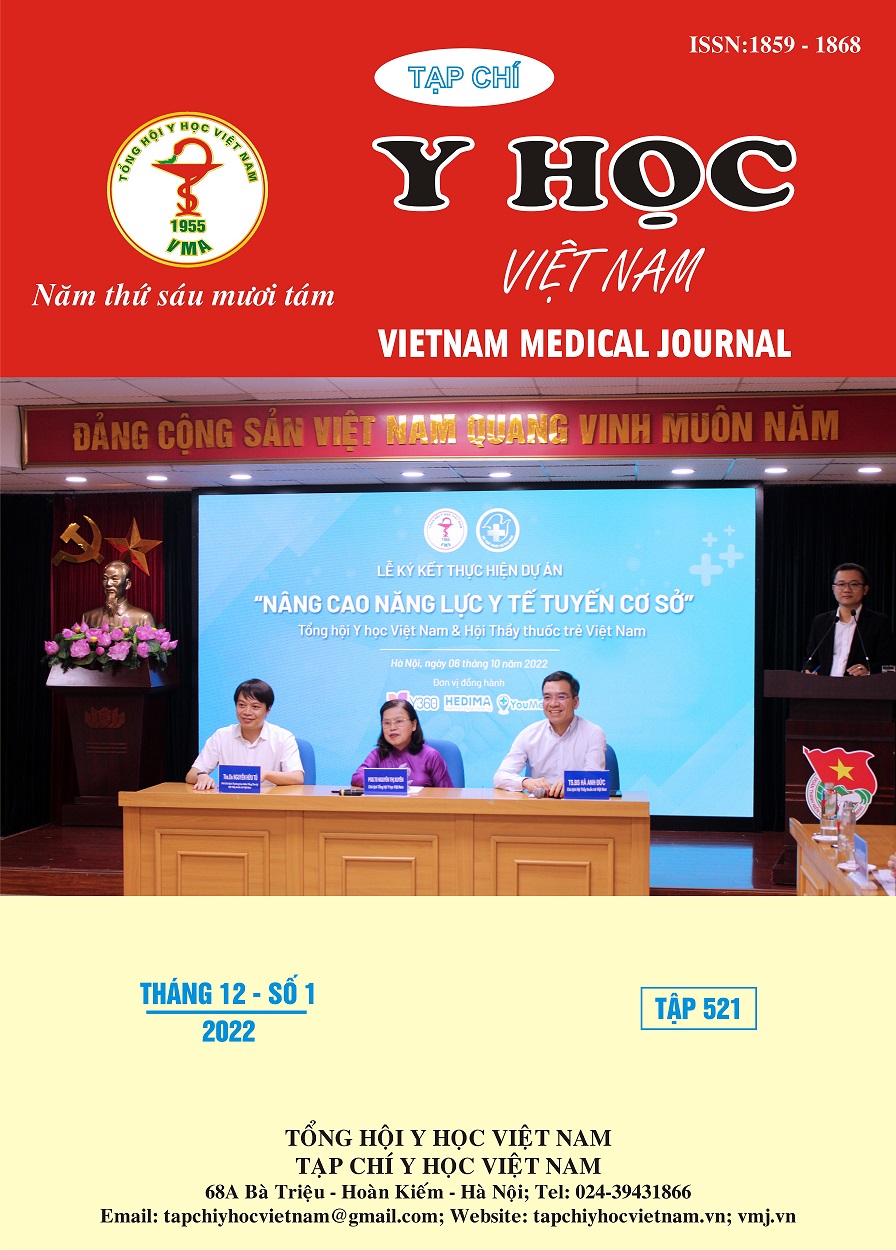CLINICAL AND SUBCLINICAL CHARACTERISTICS IN PATIENTS WITH BENIGN PAROXYSMAL POSITIONAL VERTIGO
Main Article Content
Abstract
Background: Description of some clinical and subclinical characteristics in patients with benign paroxysmal positional vertigo (BPPV). Objective: 23 patients with BPPV were treated in Neurology Department of Cua Dong General Hospital and Neurology Center of Bach Mai Hospital from February 2022 to October 2022. Method: Cross – sectional study. Result: The average age of patients with BPPV was 66.50±12.30, female accounting for 78.3%, percentage of patients with relapses of 69.6%, average BMI: 22.37±1.60. Up to 91.4% of patients with BPPV were primary. Some common medical histories and pathologies included: dyslipidemia (60.9%), type 2 diabetes (43.5%), hypertension (44.0%), anxiety disorders- depression (39.1%). Lesions were more common on the right side (78.3%), on the left (17.4%) and on both sides (4.3%). Features of nystagmus when doing Dix-Halpike test include latency duration: 3.43±1.34 seconds, nystagmus duration: 9±2.71 seconds. The average T-Score was -2.73±0.71 in which 47.8% of the patients had osteoporosis (T-Score: < -2.5); 43.5% of patients had osteopenia (T-Score: -1 to -2.5) and 8.7% of patients had normal bone density (T-Score > -1). Conclusion: BPPV is a common disease, especially in female (78.3%), with 69.6% of patients having many relapses in their history. Some common comorbidities include: High blood pressure, diabetes, dyslipidemia, obesity, osteoporosis.
Article Details
Keywords
Clinical, subclinical, benign paroxysmal positional vertigo
References
2. Oghalai JS, Manolidis S, Barth JL, Stewart MG, Jenkins HA. Unrecognized benign paroxysmal positional vertigo in elderly patients. Otolaryngol Head Neck Surg. 2000;122(5):630-634.
3. Ciorba A, Cogliandolo C, Bianchini C, et al. Clinical features of benign paroxysmal positional vertigo of the posterior semicircular canal. SAGE Open Medicine. 2019;7:205031211882292.
4. Messina A, Casani AP, Manfrin M, Guidetti G. Italian survey on benign paroxysmal positional vertigo. Acta Otorhinolaryngol Ital. 2017; 37(4):328-335.
5. Cheng Z, Wang M, Yu J. Benign paroxysmal positional vertigo and serum transthyretin in Chinese older adults. Asia Pac J Clin Nutr. 2021;30(3):383-391.
6. Power L, Murray K, Szmulewicz DJ. Characteristics of assessment and treatment in Benign Paroxysmal Positional Vertigo (BPPV). J Vestib Res. 30(1):55-62.
7. Talaat HS, Abuhadied G, Talaat AS, Abdelaal MSS. Low bone mineral density and vitamin D deficiency in patients with benign positional paroxysmal vertigo. Eur Arch Otorhinolaryngol. 2015;272(9):2249-2253.
8. Sfakianaki I, Binos P, Karkos P, Dimas GG, Psillas G. Risk Factors for Recurrence of Benign Paroxysmal Positional Vertigo. A Clinical Review. JCM. 2021;10(19):4372.


